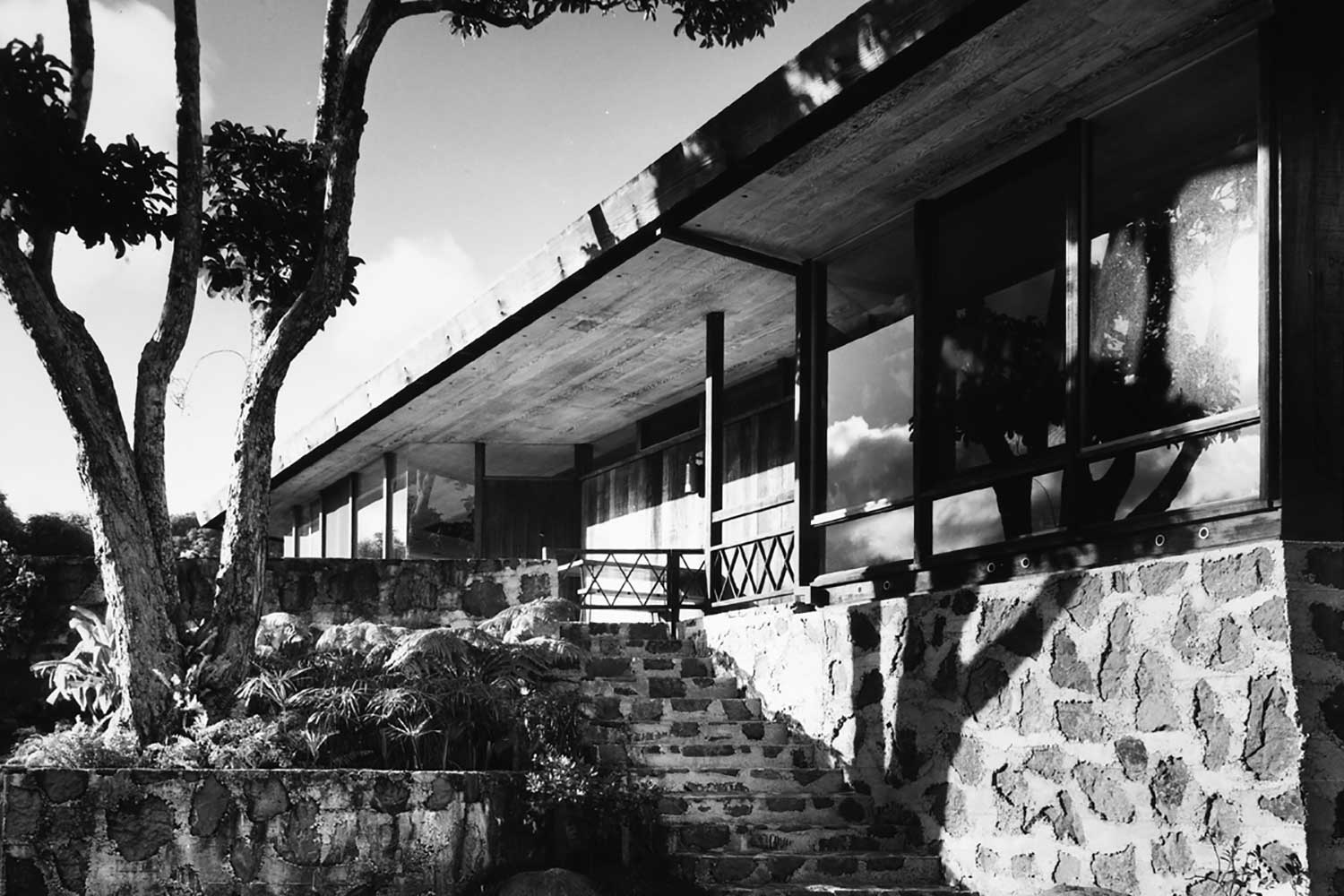The best way to view O‘ahu is to travel far above the city, high enough that skyscrapers no longer seem so tall. Atop Mount Tantalus sits the Liljestrand House, boasting one of the best seats on the island for views. Designed by architect Vladimir Ossipoff, the three-tiered house rests on the side of the steep mountain. Betty and Howard Liljestrand, a nurse and doctor, respectively, had spent 10 years searching the mountains for the perfect site on which to build their house before stumbling upon this location. The couple purchased the land from the Territory of Hawai‘i in 1946, hired architect Vladimir Ossipoff to take on the project, and moved into the house in 1952.
In Betty’s opinion, Ossipoff, who was noted for his ability to work around the existing environment, was the obvious choice. Ossipoff’s structures, she wrote of his work, “looked all well on the outside, as though in their locations each belonged.” Betty, it seems, recognized good taste when she saw it. Decades later, Ossipoff’s work still resonates. The book Hawaiian Modern: The Architecture of Vladimir Ossipoff describes the works of the Russian-born, Japanese-raised architect who is considered to be the master of Hawaiian architecture. From the mid to late 20th century, he designed more than 800 buildings in Hawai‘i. Originally published in 2007 as a hardcover, the book was, until recently, considered rare among art and architecture book collectors, fetching up to $5,000 online. The book was rereleased in spring 2015 as a $45 paperback.
“The Liljestrand House was perhaps Ossipoff’s most intricate as well as his most widely publicized domestic commission,” says Hawaiian Modern author Dean Sakamoto. Bob Liljestrand, the eldest son of Betty and Howard, opened the house to private tours in 2004, providing both knowledge garnered from his master’s degree in architecture, and personal anecdotes from childhood years spent in the house. Guests of Halekulani can take advantage of free tours of the iconic home every first and third Thursday of the month. The hour-long tour reflects the innovative mind of Ossipoff: Natural light streams into every room from long, tall windows, and most of the second floor is covered by an expansive lānai that remains cool on even the hottest days, thanks to the architect’s masterful manipulation of trade winds.
Despite no longer living in the home, Bob keeps everything as his parents left it. Vinyls are stacked in cabinets, a rusted sewing machine occupies the kitchen that once doubled as Betty’s office, and an old pool table rests on the lānai. “The house is a museum,” Bob says with a chuckle, while showing off a record player. “But this is also home.”
Tours of the Liljestrand House are free to guests of Halekulani, and take place every first and third Thursday of the month. Each tour is followed by a visit to Honolulu Museum of Art’s Spalding House, a contemporary art museum located in Makiki. To reserve a tour spot, contact the hotel concierge at 808-923-2311.


































Share: